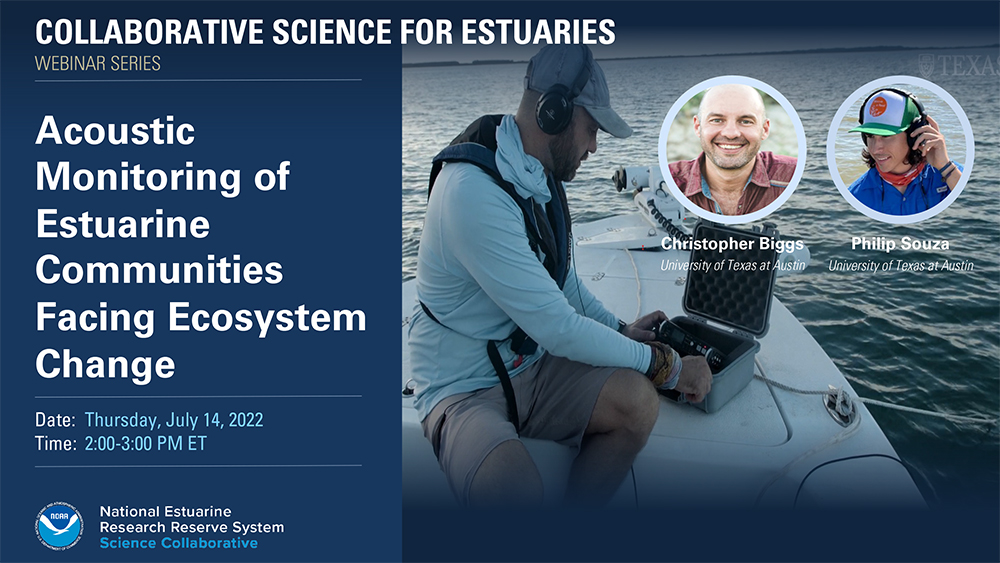 Webinar Description
Webinar Description
Soundscape ecology is a promising new field that studies the sounds produced above and below water using a variety of acoustic sensors. Passive acoustic monitoring records sound produced over multiple levels of biological complexity which can be used to investigate and monitor biodiversity, behaviors such as feeding and spawning, and anthropogenic noise. By implementing acoustic monitoring, scientists and managers can identify key habitats for protection and measure how ecological communities respond to environmental changes (e.g. storm events, coastal development, eutrophication) in a cost-effective and low-impact manner.
This project brought together academic leaders in bioacoustics, estuarine ecology, and fisheries ecology with managers and staff from the Mission-Aransas, Rookery Bay, and North Inlet-Winyah Bay reserves. The goal was to develop a framework for a new acoustic monitoring program that could be integrated with reserve programs throughout the region, including: long-term system monitoring; targeted research, e.g. oyster reefs; stewardship applications, e.g. visitor use and anthropogenic noise; and education programs such as TOTE. In this webinar, project lead Chris Biggs talks about the project approach and management context, shares lessons learned from the project, and discusses the value of active acoustic monitoring as a component of ecosystem stewardship.
Webinar Summary Products
- Webinar Recording (YouTube)
- Speaker Bios (Webinar Page)
- Slides and Q&A (PDF)